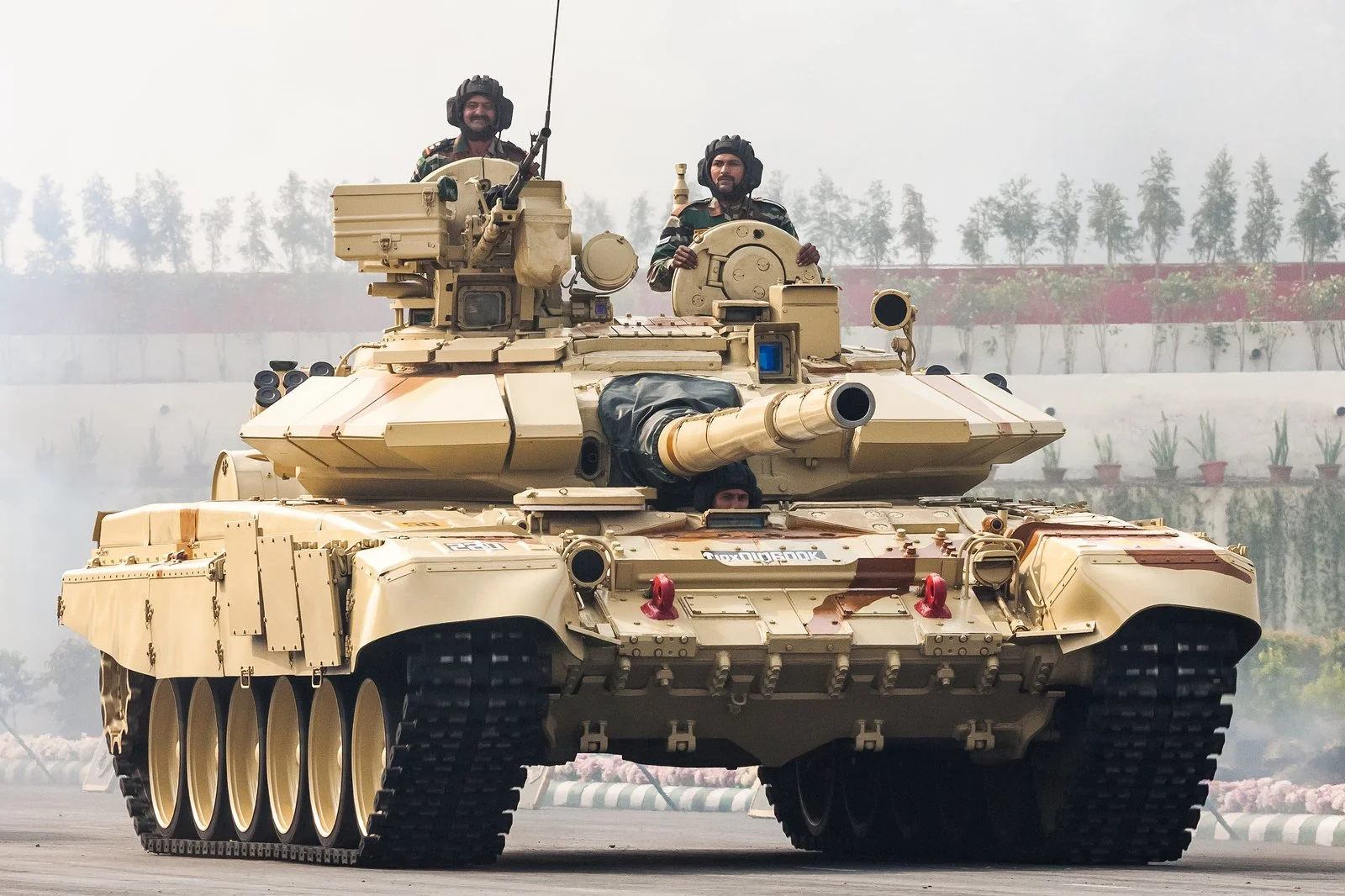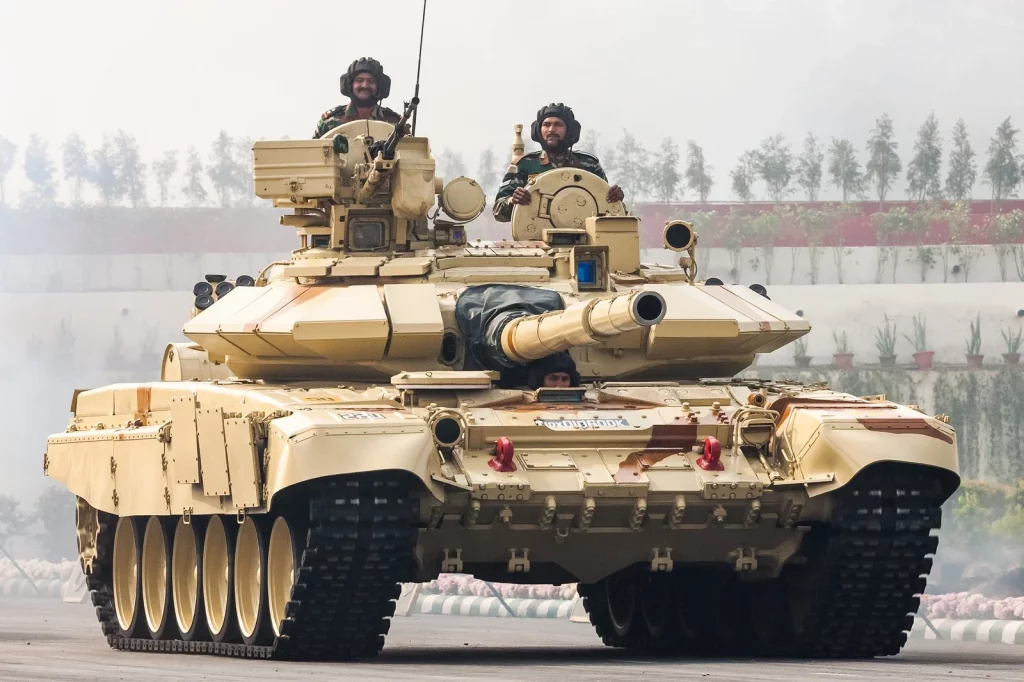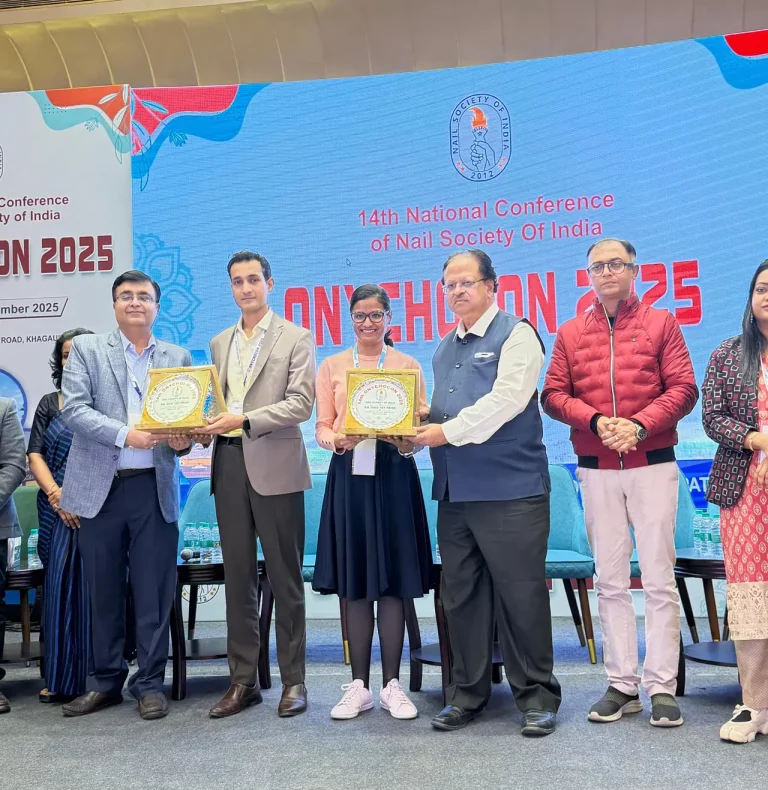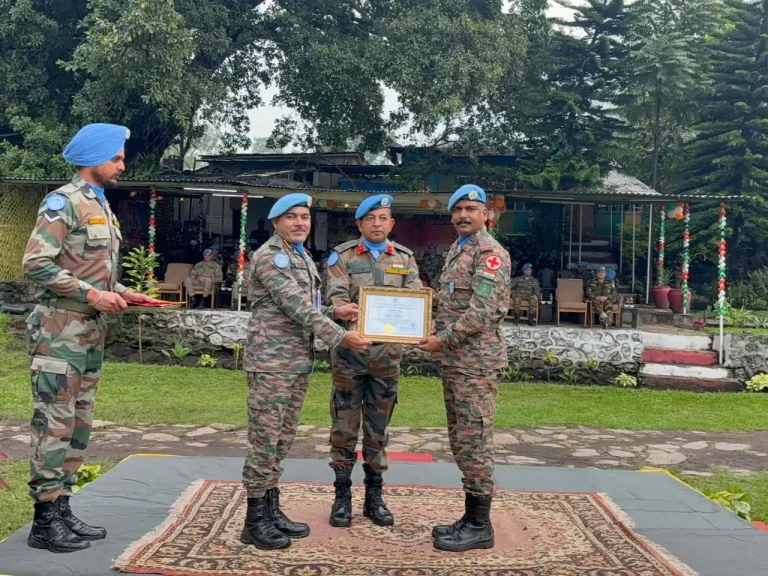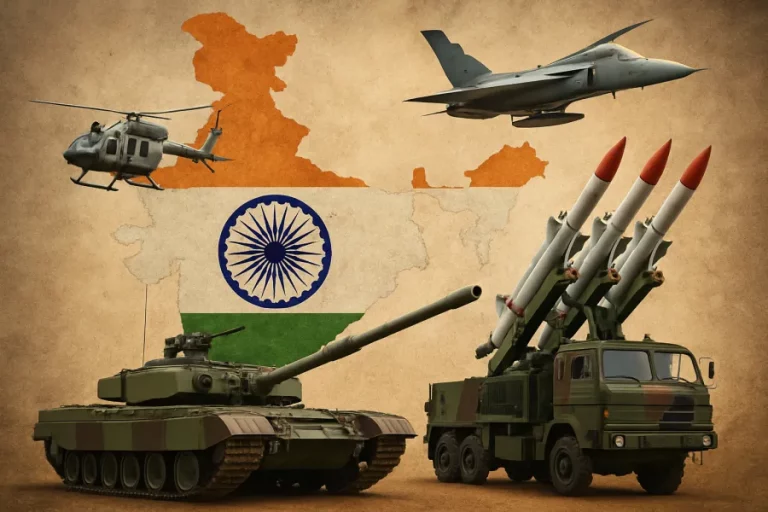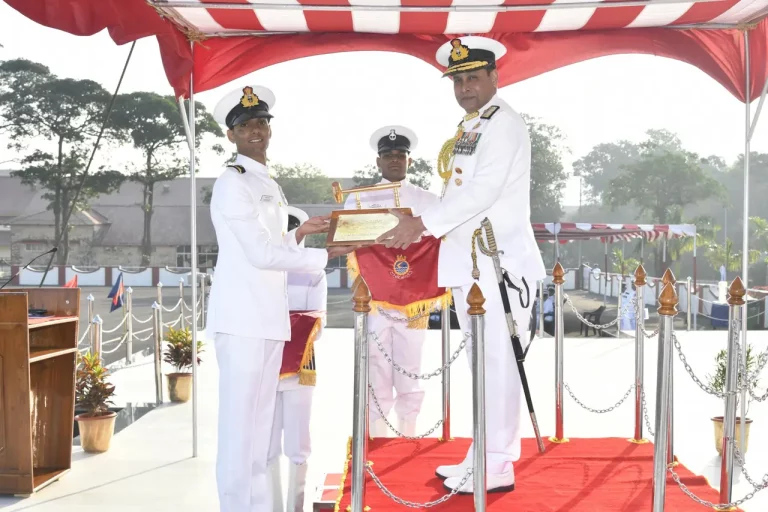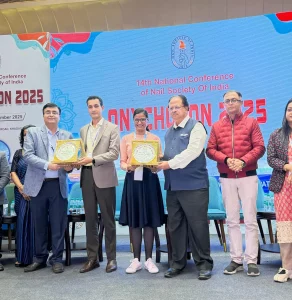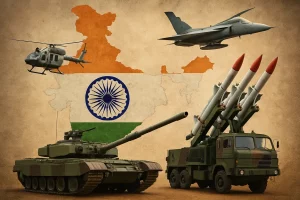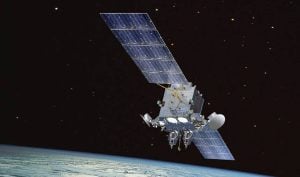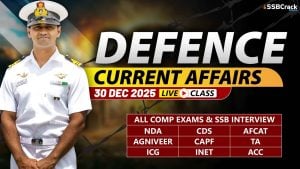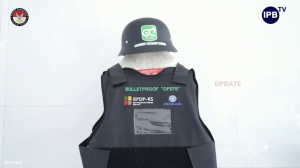In addition to demonstrating self-reliant defence technologies, ‘Bharat Shakti’ also aimed at highlighting the seamless integration of the three armed forces in communication, training, interoperability, and logistics.
On March 12, the Army’s Pokhran range in Rajasthan was the stage for the dynamic tri-services exercise ‘Bharat Shakti.’ This nearly 50-minute exercise, observed by Prime Minister Narendra Modi and representatives from at least 30 countries, was a unified display of India’s indigenous defense prowess.
The exercise not only featured a range of homegrown weapons systems and platforms but also aimed to highlight the cohesive integration of the Army, Navy, and Air Force in aspects such as communications, training, interoperability, and logistics.
Here, A list of the domestically developed weapons systems that were prominently featured during the ‘Bharat Shakti’ exercise.
T-90 tanks
The T-90 Bhishma represents India’s third-generation adaptation of the Russian T90S tank. With over 1,000 units in its arsenal, the Indian Army has embraced these formidable machines, which are now produced domestically under a licensing agreement with Russia. These tanks are known for their robust armament, sophisticated fire control systems, and sturdy armor protection, each weighing in at 46 tonnes.
Dhanush artillery guns
The Dhanush is a 155 mm, 45-calibre towed howitzer, a contemporary upgrade of the 155 mm, 39-calibre Bofors FH 77 gun, crafted by the state-owned Advanced Weapons and Equipment India at the Gun Carriage Factory in Jabalpur. Boasting a range of 36 km, it was officially approved for service in 2019. The Indian Army has committed to a purchase of 114 Dhanush artillery guns, which have already been incorporated into the Army’s Regiment of Artillery for active deployment.
MBT Arjun
The Main Battle Tank (MBT) Arjun, a product of the Defence Research and Development Organisation (DRDO), features an indigenous Fin Stabilised Armour Piercing Discarding Sabot (FSAPDS) ammunition and a 120 mm calibre rifled gun. Capable of reaching a top speed of 70 km/h, the Arjun tank was officially inducted into service in 2004.
Akash missile system
The Akash missile system, a mid-range surface-to-air defense platform, was developed by the Defence Research and Development Organisation (DRDO) as part of the Integrated Guided Missile Development Programme (IGMDP). Deployed by both the Indian Army and Air Force, the Akash system is equipped with advanced Electronic Counter-Counter Measures (ECCM) capabilities, allowing it to engage multiple targets simultaneously in autonomous mode.
ALH Dhruv
The Advanced Light Helicopter (ALH) Dhruv, a product of indigenous development, is a versatile multi-role, multi-mission helicopter with twin engines, manufactured by Hindustan Aeronautics Limited (HAL). Conceived in 1983, the Dhruv primarily serves as a utility helicopter for transporting personnel and materials.
Its development has led to several variants, classified into Dhruv Mk-I, Mk-II, Mk-III, and Mk-IV, each designed to meet specific operational requirements and enhance performance across different missions.
Pinaka rocket launcher
The Pinaka, a multi-barrel rocket launcher system developed by the Defence Research and Development Organisation (DRDO) for the Indian Army, stands out for its impressive rapid-fire capability. Capable of launching a salvo of 12 rockets within approximately 44 seconds, the Pinaka system demonstrates significant operational flexibility. It has a maximum range of 40 km in its Mark-I version and extends up to 120 km for the enhanced Mark-I variant. In a notable advancement, the government approved the procurement of around 6,400 rockets for the Pinaka rocket launchers last December, further bolstering the system’s firepower and strategic utility.
Naval Anti-Ship Missile–Short Range
The Naval Anti-Ship Missile–Short Range (NASM-SR) represents a significant milestone in indigenous military technology as the first air-launched anti-ship cruise missile developed by the Defence Research and Development Organisation (DRDO) specifically for the Indian Navy. Designed to be launched from helicopters, the NASM-SR enhances the Navy’s capability in maritime warfare by providing a precise and powerful means to target and neutralize enemy ships.
LCA Tejas
The Light Combat Aircraft (LCA) Tejas, a hallmark of Indian aerospace engineering, is a single-engine, delta-wing, lightweight multirole fighter developed by Hindustan Aeronautics Limited (HAL). This advanced aircraft was designed through a collaborative effort between the Aeronautical Development Agency and HAL’s Aircraft Research and Design Centre, aiming to serve both the Indian Air Force and Navy.
K9 Vajra
The K9 Vajra is a 155 mm, 52-calibre tracked self-propelled howitzer manufactured in India by Larsen & Toubro (L&T) under a technology transfer agreement with South Korea’s defence giant, Hanwha Defense. Designed to be versatile and powerful, the K9 Vajra can accommodate both Indian and NATO standard ammunition. It boasts the capability to fire shells at steep elevation angles, enhancing its operational flexibility and effectiveness in various combat scenarios.
Swathi WLR
The Swathi Weapon Locating Radar (WLR) is an advanced mobile, artillery-locating, phased array radar system engineered by the Defence Research and Development Organisation (DRDO). It is meticulously designed for the critical task of detecting and tracking incoming artillery and rocket fire to enable effective counter-battery operations. Furthermore, the Swathi WLR possesses the capability to accurately determine the positions of enemy weaponry, including mortars, shells, and rockets, within a range of 50 kilometers, providing a significant tactical advantage in battlefield scenarios.
BMP-II Sarath
The BMP-II stands as an amphibious infantry fighting vehicle that serves as the cornerstone of India’s Mechanised Infantry. This vital piece of military hardware is produced domestically by the state-owned Ordnance Factory Board (OFB), under a licensing agreement from Russia, ensuring that India maintains a robust and versatile capability for both land and water-based operations.
Modular bridge
During the exhibition, the Army demonstrated its advanced bridging capabilities through the presentation of a 46-metre modular bridge, a remarkable engineering feat developed by the Defence Research and Development Organisation (DRDO) and manufactured by Larsen & Toubro (L&T). This modular bridge showcases the strategic mobility and rapid deployment capabilities of the Army in constructing passageways across challenging terrains.
